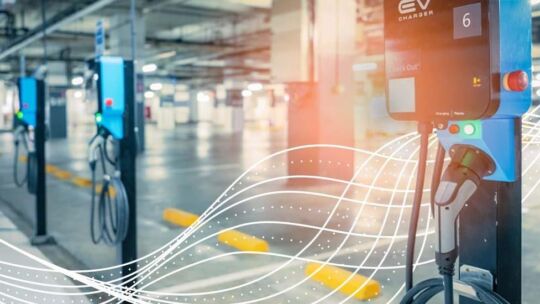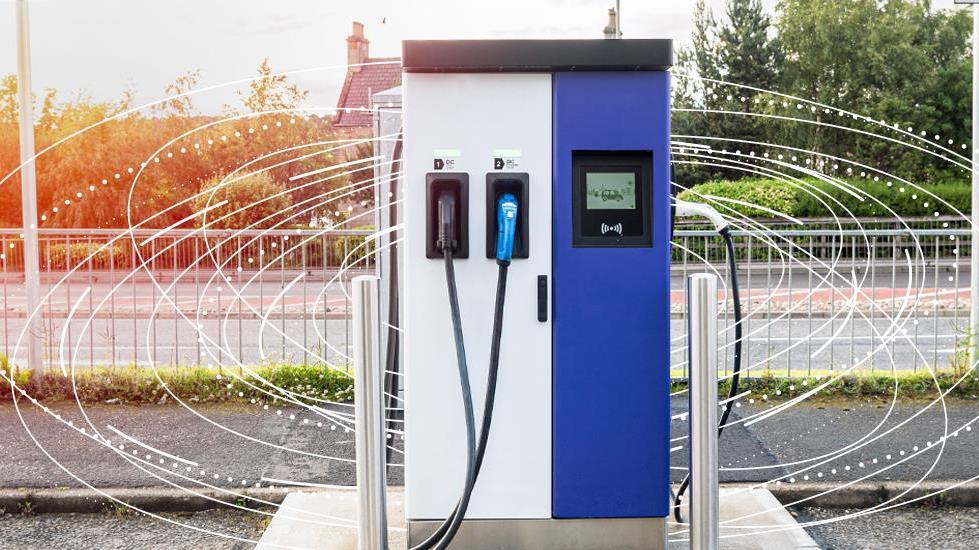
The global market for electric vehicles (EVs) is projected to grow at a robust pace for the next several years. This demand is driven by efforts to reduce carbon emissions, the desire for high-performance vehicles, continuous improvements of EV technology, and government incentives, according to a Market and Markets report. With the desire to reduce emissions, Europe and the United States are driving much of that growth by relaxing government regulations and providing financial incentives.

More EV Charging Stations are needed
There will be a need for an expanded network of EV charging stations to keep those cars going and on the road. During Tesla’s Q2 2021 earnings conference call, Elon Musk announced his plans for a Supercharger Network to help meet the vehicle charging demands of the increased number of EVs. This Supercharger Network would be an extensive global network of fast-charging stations for Tesla EVs and EVs from other automakers, allowing more access to public charging stations. This move, along with investments from other EV charging companies, will help boost and improve the infrastructure of EV charging.
What are the building blocks of an EV charging station?
An EV charging station connects to the power grid and transfers the power to be converted to the appropriate voltage using the power block inside the charger. The voltage is transferred to an EV through a connecting cable.
Building reliable, safe, and public EV charging stations with fast charging times will be essential to keep the EV market growing. Drawing on our cross-industry experience, Flex is well positioned to support the fast-growing EV charger market. Our team of global subject matter experts help our customers identify and implement technologies to improve their overall position within the space.
Micro-Electronics block
To communicate with the charger, the user interacts with a human-machine interface, like an LCD touchscreen that interfaces with the charger software to operate the machine and authorize payment for usage. Networking and telematics handle the communication between the charger, the cloud platform, and the user to implement the choices made on the interactive screen. The communication relies on Bluetooth, Wi-Fi, cellular, and ethernet protocols to perform the selections made during the transaction. We have extensive experience designing, engineering and manufacturing interactive touchscreens with cosmetic finishes and IoT capabilities to integrate with the customer’s firmware and payment software used to operate the EV charger.
Power Electronics block
This block is the heart of the EV charger. DC Fast Chargers include an AC-DC converter, a DC-DC converter, and an EV interface. Level 1 and 2 AC Chargers include the EV interface and do not utilize a converter.
- AC-DC converter pulls AC voltage from the main power supply, generally 3-phase 480V or similar, and converts it to the high voltage DC supply in the range of 50 -300kW for use internally in the charger.
- DC-DC converter pulls high voltage DC from charger’s internal supply and converts to the correct voltage to interface the vehicle batteries. These converters generally handle power in the range of 50-300kW.
- The EV interface includes the circuitry needed to communicate to the EV to enable charging, such as switching the voltage on/off when using the charger. The circuitry is critical to operating the charger safely by the user by ensuring the voltage is not present on charge coupler pins when not connected to the vehicle.
We help our customers by reviewing the design of the power block and offer suggestions to improve its safety and manufacturability. Our regional and global supply chain experts are consulted to suggest the best materials to use and reduce costs. Both capabilities help manufacture a high-quality, safe operating EV charging station for our customers’ end-user.
Enclosure block
The rugged sheet metal enclosure for the EV charging station has a three-fold purpose. The first purpose is to protect the internal circuitry from all types of environmental conditions, such as extreme heat and cold, rain/snow, dust, UV exposure, mechanical impacts, and vandalism. The second purpose is to protect the users from hazardous voltage from the EV charging station during the use of the equipment. Finally, it must be designed to look aesthetically pleasing and support all the weight from the internal components, mechanicals, and power blocks. We have extensive experience in sheet metal fabrication and cosmetic finishes to design and build an enclosure that looks nice and protects the user and the internal components.
Types of EV Charging Stations
Like a traditional vehicle, an EV owner needs to find a station, fuel their car, and get on their way. One difference for an EV owner is they need to know the charging speed of the EV charging station to determine how fast the car will be recharged. There are 4 types of EV charging stations, and what sets each group apart is how fast or slow the charge rate will be.
Level 1 — Slow Charging (120 Volt)
These charging stations are usually located at personal residences and add 5 miles of range per hour of charge to the battery. Typically, the EV owner can recharge their battery overnight, but it can take longer than a day if the battery is fully discharged. The stations are not permanently mounted and plugged into a standard 120-volt outlet. This process is the slowest way to charge an EV.
Level 2 — Fast Charging (208 Volt to 240 Volt)
Located at homes, business, retail, and public places, these charging stations can replenish 25 miles of range per hour. This station can fully charge a battery in 9 hours if it is fully discharged. The installation of this type of charger will require a professional electrician and industrial building materials to hard wire the charger to the breaker box to comply with National Electrical Code (NEC) requirements for safety.
Level 3 — DC Fast Charging and Supercharging (480 Volt to 900 Volt)
These fast-charging locations are located along public highways and provide a charging speed of 200 miles of range per hour of charge to the battery. It will approximately take 1.5 hours to charge your battery if depleted. This charger uses direct current (DC) instead of the traditional alternating current (AC) of the Level 1 and Level 2 chargers. These chargers are installed in commercial settings because of the high voltage supply needed to operate the station. These EV charging stations are becoming commonplace to support long-distance travel by EVs.
Wireless/Inductive Charging — Future Charging Option
This process uses magnetic forces to transfer electrical power from a transmitter to a receiver without cables or connections and be a fast source for charging an EV. This charging station is the way of the future because it allows the EV owner to drive over the transmitter’s location and activate it either by a smartphone or kiosk. This charging option is relatively new and needs to address technology, safety, costs, and environmental changes before being widely used.
Building EV Charging Stations for all EVs
EVs and EV charging stations will continue to grow and change to meet the demands of the customers. Supporting a standardized EV charging station system would go a long way to meet those demands. We have partnered with leading EV charging station companies to manufacture their current generation stations and are the electronics manufacturing services partner of choice for these companies. As a global company, Flex is poised to meet those demands with the help of our innovative engineers, extensive supply chain system, and world-class manufacturing capabilities.







